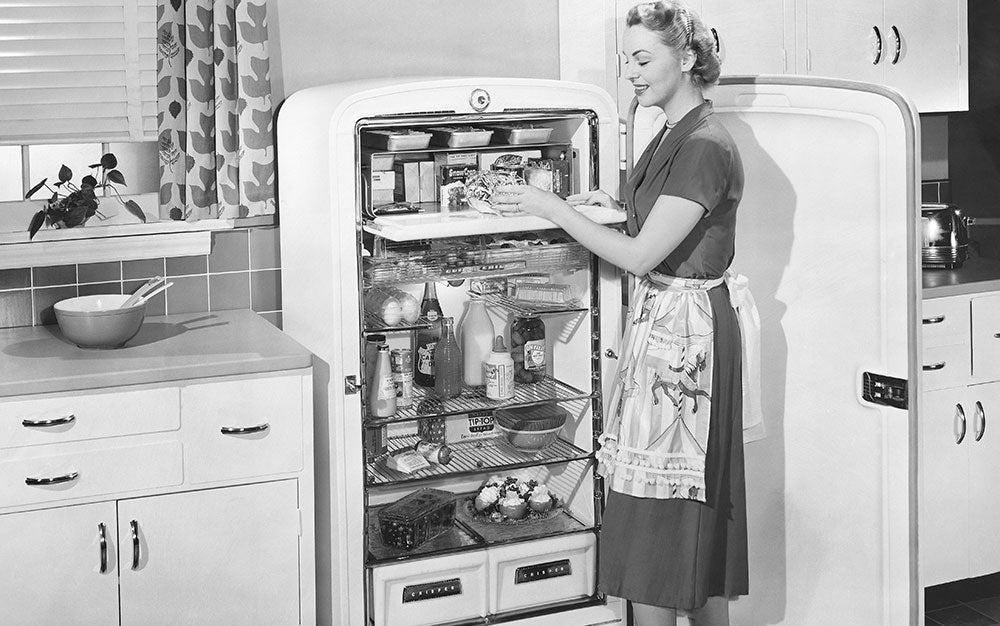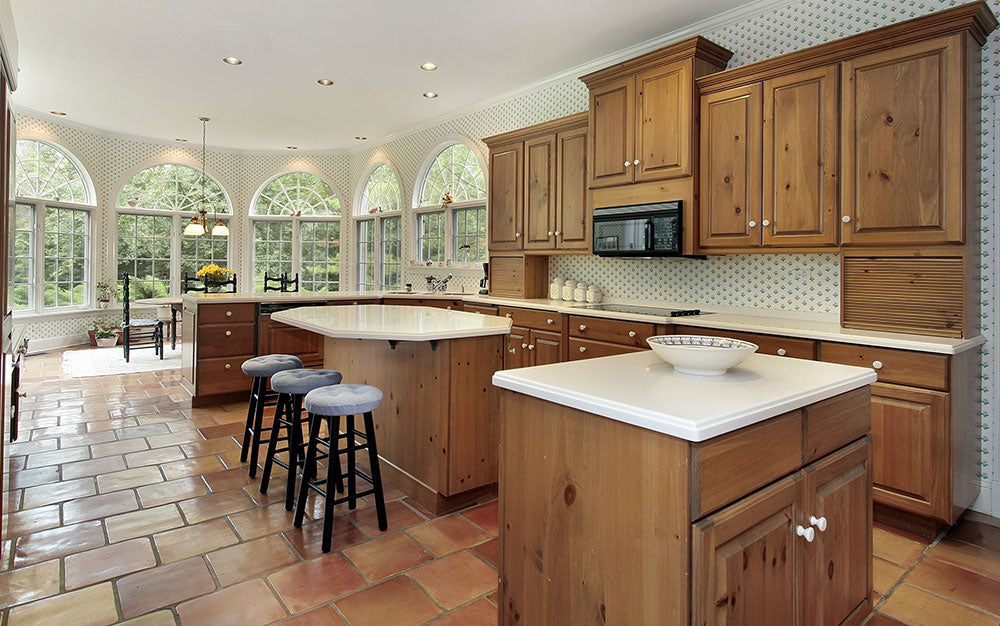We hardly take notice of our kitchen cabinets. Sure, if you just did a remodel you might appreciate the color, their space, and even their detail for a short time-but eventually our appreciation fades and cabinets are once again just a place to store our stuff. Our spice racks, our pots and pans, and our silverware lives in these spaces-and that's all they're good for, right?
Incorrect! What if we told you that there has been an evolution of cabinetry? Over the years, the tiny differences have been so small that we've barely even noticed them. In fact, is isn't until we sit down and take a look back at what our grandparents and great grandparents used that we truly realize just how far our cabinetry has come.
1920's - Hoosier Cabinets: A Hoosier was a type of cupboard that was extremely popular in the early 20th century. The cabinet had three parts: a base section, a slide out shelf, and several cabinet doors. The Hoosier cabinet came complete with accessories. In addition to racks for spices, there was also glassware that classically held flour, sugar, coffee, and tea. The Hoosier cabinet sped up meal delivery and no one was happier about this than mom.
1930's - Vintage Retro: The Depression may have hit hard, but it didn't stop a new wave of technology from hitting the American kitchen. In addition to brightly painted cabinetry (think greens and yellows) and Streamlined Deco style, there was also the arrival of electrical appliances that we wouldn't be caught dead without today. Everything from toasters to stoves began to grace the modern kitchen and housewives across the country rejoiced. Additionally, the 1930's graced just about every home with the modern invention of the ice box which kept milk, meat, and even butter nice and cold.
1940's - Low Profile: There was a war happening, but that didn't mean there weren't changes. In fact, many of the staples of a 1940's kitchen are still incorporated in our kitchens today. Fully functional items doubled as accessories. Stainless steel, for instance, was in short supply but low-profile pots and pans made their way into modern kitchens anyway. Additional hardware accessories that can still be seen today includes mason jars and oversized porcelain containers. Crystal and glass pull knobs for our drawers also made an appearance while colors remained neutral or, at the very least, muted.
1950's - Bold and Beautiful

The post-war era brought kitchens to the forefront of family gatherings. Bright colors decorated walls and cabinets alike while floral wallpaper also began to take hold. Steel cabinets with stainless steel countertops were considered cutting-edge. Cabinets lined most walls and pull hardware went from delicate crystal and glass to a more substantial, solid look. Kitchen islands also took hold, forming the foundation for much more cabinet space to come.
1960's/1970's - A New World: As the 60's segued into the 70's, women realized they had better things to do than toil over meatloaf. Perhaps this can explain the greens, golds, and even shag carpet found in many kitchens during this era. While there wasn't much forward movement by way of cabinetry in this era, microwave ovens made themselves at home in the kitchen, changing up dinnertime forever.
1980's - The New Generation

If you didn't already know, the first generation of celebrity chefs on television appeared in the 80's. They reinvigorated the desire to use the kitchen and helped push gold and green aside for a more sleek, modern look. The kitchen island became more than just extra counter space and morphed into additional storage containing bins and drawer space. Cookbook shelves found their way into homes along with pot racks, making it easier for cooks in the kitchen to grab what they needed instead of having to dig around for it. There was quite bit of white and steel happening–a fresh look to be sure.
1990's - A Modern Twist: Kitchens once again became a popular centerpiece of the home, and their size represented just that. Sprawling and open, kitchens in the 90's were filled with high-end appliances, granite countertops, and cabinets that would have made the family room jealous. Drawer organizers made their way into even more utensils drawers and stainless steel. Cabinets were solid, drawer hardware fell more in line with use than decoration, and layered lighting began to take hold.
Today

Kitchen are still huge, but they're starting to reduce in size with a throwback to that 20's style. That being said, today's kitchens still serve as a center point for modern families. In addition to (men and women) cooking there, children do their homework, the dog eats his breakfast, and guests will chatter over cocktails and appetizers until the wee hours. Cabinets boast an array of colors from neutral grays and creams to bursts of blue and red. Layered lighting under the cabinets adds an extra dash of moderns while high-end bamboo drawer organizers add a touch of class. A Docking Drawer kitchen charging station helps you keep high-end tech such as watches, tablets, and even laptops fully powered. Meanwhile non-slip mats keep everything right where you left it. Glideware keeps our pots and pans organized while Blum offers us hardware-free ways to open drawers.
Want more even modernized cabinet ideas? Our partners at Hafele have an accessory catalog that's just bursting with possibility.
It's easy to forget how far our kitchens and cabinets have come. Thanks to a little invention and always moving forward, the kitchen cabinet has been revolutionized into a beautiful, useable centerpiece of every home's kitchen.
